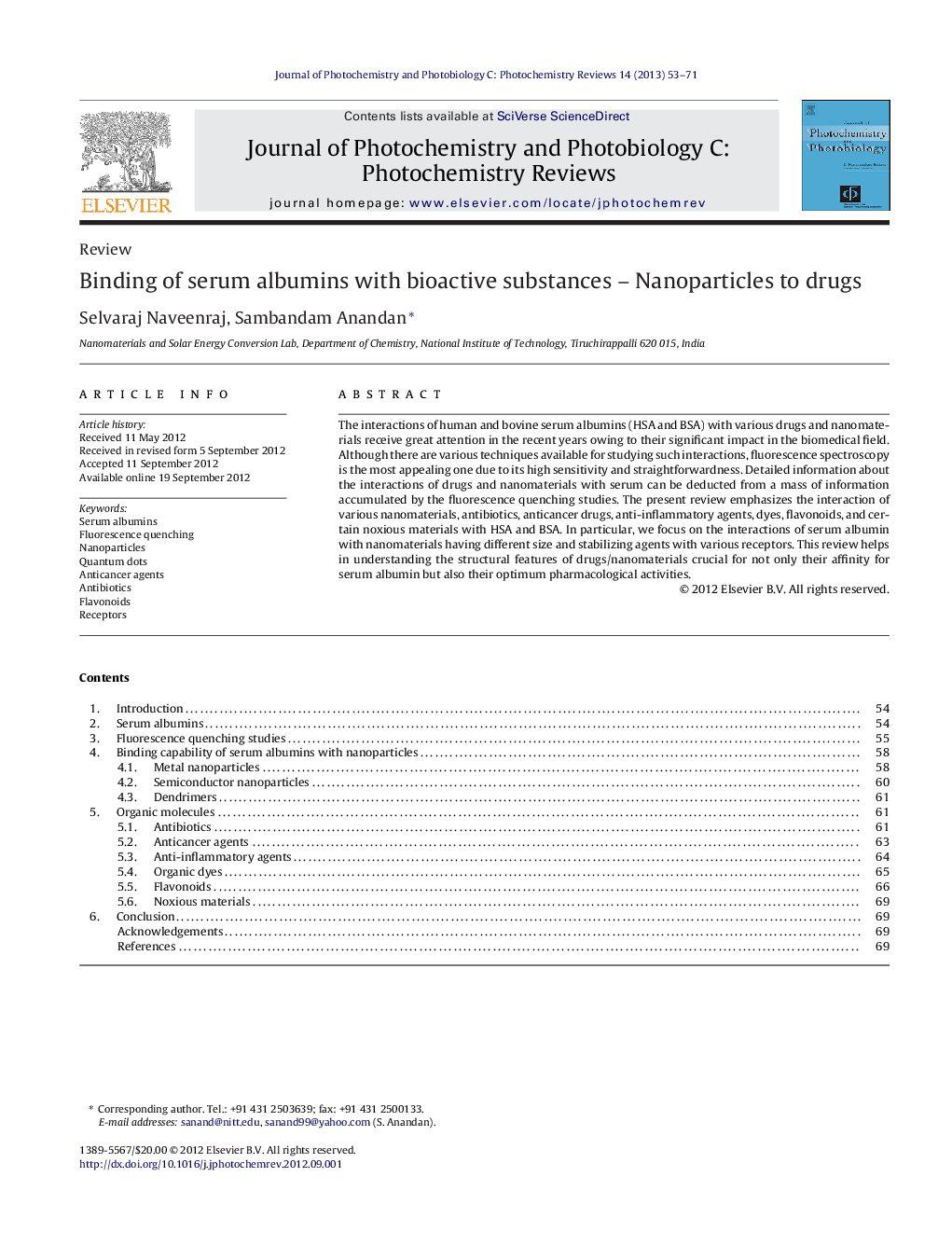| Article ID | Journal | Published Year | Pages | File Type |
|---|---|---|---|---|
| 31309 | Journal of Photochemistry and Photobiology C: Photochemistry Reviews | 2013 | 19 Pages |
The interactions of human and bovine serum albumins (HSA and BSA) with various drugs and nanomaterials receive great attention in the recent years owing to their significant impact in the biomedical field. Although there are various techniques available for studying such interactions, fluorescence spectroscopy is the most appealing one due to its high sensitivity and straightforwardness. Detailed information about the interactions of drugs and nanomaterials with serum can be deducted from a mass of information accumulated by the fluorescence quenching studies. The present review emphasizes the interaction of various nanomaterials, antibiotics, anticancer drugs, anti-inflammatory agents, dyes, flavonoids, and certain noxious materials with HSA and BSA. In particular, we focus on the interactions of serum albumin with nanomaterials having different size and stabilizing agents with various receptors. This review helps in understanding the structural features of drugs/nanomaterials crucial for not only their affinity for serum albumin but also their optimum pharmacological activities.
Graphical abstractThis review exemplifies the binding interactions of various nanoparticles and organic molecules such as antibiotics, anticancer agents, antiinflammatory agents, flavonoids, dyes, noxious materials with serum albumins using fluorescence quenching studies.Figure optionsDownload full-size imageDownload as PowerPoint slideHighlights► Immense amount of information can be deduced from the fluorescence quenching studies. ► The reviewed results show the dependence of nanoparticles size in their interaction. ► They also exemplify the influence of stabilizing agent present in the nanoparticles. ► Bioactive substances interact dissimilarly due to steric hindrance of substituent.
